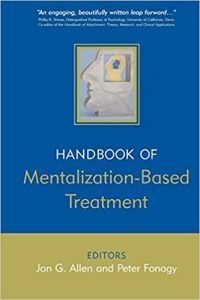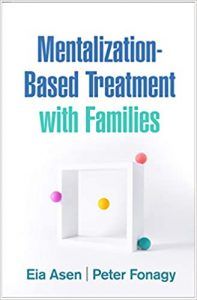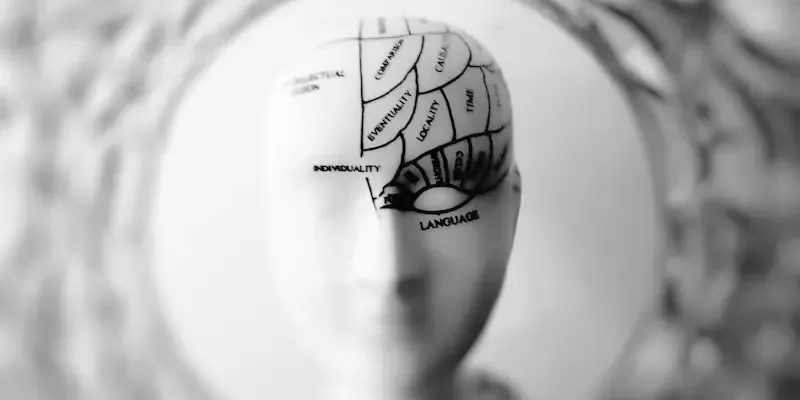Mentalization-Based Therapy Guide: Best Worksheets and Techniques
 To neuroscientists, psychoanalysts, existential philosophers, and various types of mental health practitioners, the idea of mentalization is both foundational and captivating.
To neuroscientists, psychoanalysts, existential philosophers, and various types of mental health practitioners, the idea of mentalization is both foundational and captivating.
Use of the term “mentalizing” in academic papers increased from 10 to 2,750 between 1991 and 2011 (Bateman & Fonagy, 2013).
Mentalization-Based Therapy (MBT) makes “mentalizing” the focus of therapy and has been enthusiastically embraced by clinicians, therapists, and coaches.
We discuss MBT in depth below, including why it has become increasingly popular, and offer a few free worksheets to boot.
Before you continue, we thought you might like to download our three Positive Psychology Exercises for free. These science-based exercises explore fundamental aspects of positive psychology, including strengths, values, and self-compassion, and will give you the tools to enhance the wellbeing of your clients, students, or employees.
This Article Contains:
- Mentalization-Based Therapy (MBT) Explained
- MBT Treatment: 4 Evidence-Based Findings
- 5 Mentalization-Based Techniques
- How Mentalization Therapy Works
- 3 MBT Activities for Your Sessions
- 5 Worksheets & Workbooks
- Training in MBT: Best Courses & Online Options
- Resources From PositivePsychology.com
- A Take-Home Message
- References
Mentalization-Based Therapy (MBT) Explained
Although mentalizing is an internal process, it is actually a social phenomenon. As humans, we form beliefs or ideas about the mental states of the people we interact with in daily life and in meaningful relationships. Our own mental states are influenced by these beliefs and determine how we feel, act, and respond to the world, which makes MBT an extremely important approach.
Mentalization-Based Therapy is an evidence-based treatment created for people with borderline personality disorder, but it can be utilized with other mental health issues.
The premise of this therapy is rooted in the concept of “mentalizing.” Mentalizing is the ability to identify and differentiate one’s own emotional state from that of others (Bateman & Fonagy, 2013).
It is the ability to understand how our mental state influences behavior and emotions. Essentially, mentalization describes the common psychological process people use to understand the mental states, emotions, beliefs, desires, and intentions that are the basis of interpersonal interactions.
Because the ability to mentalize is foundational to psychological health and resilience, the main goals of MBT are to improve mentalization and learn emotional regulation. MBT includes elements from psychodynamic, cognitive-behavioral, systemic, and social-ecological therapies (Lois et al., 2016).
MBT practitioners try to establish a secure therapeutic attachment with patients and create a safe environment so clients can explore personal feelings and the feelings of others to develop their capacity to mentalize.
Much of MBT is grounded in attachment theory, in which infants activate attachment by communicating emotional distress with their caretakers. Secure attachment facilitates the development of healthy mentalization (Fonagy & Allison, 2014).
However, individuals with borderline personality disorder (BPD) commonly have preoccupied, fearful, distrustful, hostile, and disorganized attachment, which is addressed in MBT. The attachment style of BPD clients is one that fails to establish and regulate a sense of safety, creating distress, unhealthy vulnerability, and emotional dysregulation (Lois et al., 2016).
The ability to mentalize helps those with BPD understand their mental states, stabilize emotions, develop empathy, and improve interpersonal relationships.
MBT Treatment: 4 Evidence-Based Findings

Because people with BPD are characterized by insecure attachment, the improvement in mentalizing helps them develop healthy internal representations and improve psychological wellbeing.
Randomized control trials
While randomized controlled trials (RCTs) of MBT are limited, a few have demonstrated promising results. One of these included 53 individuals struggling with self-harm and borderline personality traits.
After a 12-week MBT intervention, social anxiety and self-harm behaviors decreased and emotional regulation improved (Griffiths et al., 2019). In this study, the ability to mentalize was a significant predictor of change in self-harm behavior and positive emotions.
In another RCT, 44 patients were randomly assigned to either a control or mentalization (MBT) group. Improvements in impulsivity, suicidal ideation, self-harm, and depression were significantly better in the MBT group after 18 months (Bateman & Fonagy, 2001).
Additionally, an eight-year follow-up demonstrated that the benefits are long lasting. The MBT group also had higher levels of social functioning and employment history, suggesting better interpersonal skills.
A study comparing outpatient therapy with structural clinical management showed that both treatments improved BPD patient outcomes (e.g., suicide risk, self-harm, psychotic episodes, and depression), but MBT provided more significant benefits (Bateman & Fonagy, 2013).
Both treatment groups received 50 minutes of structured therapy weekly for 18 months. Outcome measures were assessed at baseline, 6 months, and 18 months.
Review of research
A systematic review of 14 studies found that MBT led to significant reductions in self-reported symptoms of distress, suicide attempts, and self-harm (Vogt & Norman, 2019).
This review found that MBT reduced levels of anxiety and depression and helped increase the quality of life among BPD patients. The positive effects were seen in hospital settings, inpatient and outpatient clinics, and through a variety of qualitative and quantitative research designs (Vogt & Norman, 2019).
As research on MBT for BPD continues to grow, the importance of mentalizing for emotional health and positive interpersonal relationships is highlighted. Empirical studies on MBT need to expand to other disorders and populations.
Types of disorders treated
While MBT was originally designed to treat borderline personality disorder, it has since been adapted to treat adolescents who struggle with depression and self-harm (Rossouw & Fonagy, 2012).
In a qualitative study, Johnson et al. (2016) found that MBT participants were better able to mentalize, had less self-hatred, and improved social functioning and interpersonal relationships after experiencing MBT.
In clinical settings, MBT has been effectively used to treat eating disorders, addictions, severe depression, and post-traumatic stress disorder (Surendra, 2019). It has also been reportedly used to treat social anxiety and specific forms of depression (Porter, 2021).
MBT vs DBT
While MBT and Dialectical Behavior Therapy (DBT) are both effective at treating borderline personality disorder and have similar roots in CBT and goals of emotional regulation, there are some key differences between the two treatments.
MBT is a simple, common-sense approach that has practical advantages over DBT. Practitioners who use MBT need little formal training, whereas DBT requires skills coaching and a curriculum with handouts, worksheets, weekly individual therapy, and a consultation team to support therapists (Bateman & Fonagy, 1999).
In this way, MBT can become a basic and useful addition to a clinician’s practice.
5 Mentalization-Based Techniques
Specific techniques apply to MBT, which we discuss here.
1. Support & empathy
Empathetic statements strengthen rapport and the therapeutic relationship, which is an essential foundation of MBT (Bateman & Fonagy, 2006).
The therapist must be able to provide support, give the client autonomy, and judiciously praise them in order to elicit change. Empathy and support are critical to any form of therapy but are particularly important in MBT. Empathy and support create new, healthy bonds between client and therapist, which is essential to the attachment theory that MBT is grounded in.
2. Clarification
In MBT, the therapist needs to clarify and elaborate to get a detailed picture of behavioral sequences and associated feelings. This clarification helps the client make connections between actions and feelings (Bateman & Fonagy, 2006).
Clarification includes repeating statements back to the client and asking questions the client can answer clearly.
3. Exploration
With exploration, the client can develop a curiosity of thoughts, feelings, and motivations (Bateman & Fonagy, 2006).
This is also a technique that helps the client share the therapist’s perspective and consider alternative experiences of the same event. Exploration provides an opportunity for the client to work on interpersonal relationship skills.
4. Challenging
Challenging the client is a technique of exploring their underlying emotional state by confronting their perspective (Bateman & Fonagy, 2006). This technique is a balance of pushing the client into conflict and finding acceptance with alternate beliefs.
5. Transference
Transference is often used in MBT to direct the patient’s emotions toward the therapist in order to analyze them (Allen et al., 2003).
While transference has often been seen as a negative in therapy, it can have numerous benefits when used intentionally. It helps patients think before they react to their own feelings and the perceived feelings of others.
How Mentalization Therapy Works

In MBT, the therapist creates a “secure base” to promote healthy mentalization and emotional regulation (Lois et al., 2016).
Throughout treatment, therapists monitor levels of mentalizing, emotional arousal, and attachment as they fluctuate in session. The goal is to stimulate just enough emotional responsiveness to explore new perspectives and find meaning, but not so much that mentalizing collapses from overarousal (Lois et al., 2016).
The therapist explores the client’s ability to maintain and recover mentalizing when challenged by emotional interpersonal events, such as misunderstandings, disagreements, rejections, and intimacy. In treatment, developmental events and attachment figures are discussed to assess how well a person can mentalize within close relationships and when the ability to do so breaks down (Lois et al., 2016).
When poor mentalizing is seen (i.e., the client goes to extremes), the therapist intervenes with “contrary moves,” and the client is encouraged to find the missing vantage point (Bateman & Fonagy, 2012). This helps the client learn to find a balanced perspective. Eventually, the client can broaden overly rigid, reactive, unrealistic, and emotionally vacant perspectives and learn more appropriate interpersonal behaviors.
3 MBT Activities for Your Sessions
- The Dream Journey activity provided by the Center for Mentalization helps clients find a safe place. By taking time to relax each part of the body, the client can let go of physical and emotional tension and distress. Once the client is in a relaxed state, they are asked to imagine a pleasant place to be. This becomes their “safe space,” which can be an anchor for exploring negative, irrational, and problematic thoughts and feelings.
- The Mentalization Model activity helps clients with interpersonal relationships. In the activity, the client is asked to think about an important relationship in their life.
- The first step is to ask the client to identify their personal feelings about the relationship, needs from the relationship, goals of the relationship, reasons to keep the relationship, and specific thoughts about the relationship.
- The next step is to have the client do the same thing from the other person’s perspective, imagining the answers the other person would provide.
- Finally, the client is asked to reflect on the differences between the perspectives (self and other) and what it was like to imagine the other person’s emotions, needs, goals, reasons, and thoughts.
- The Triune Brain activity is great for MBT sessions. It helps clients understand the three states of the brain: executive, emotional, and survival. After some psychoeducation on the three aspects of the brain, clients can identify specific examples of when each part of the brain is used and expressed in life.By simply identifying thoughts, emotions, and behaviors for which each area of the brain is responsible, clients can become more self-aware and learn the ability to mentalize.
5 Worksheets & Workbooks
A selection of worksheets and workbooks to assist with mentalization-based treatment.
1. The Handbook of Mentalization-Based Treatment – Jon Allen and Peter Fonagy
This handbook and workbook outlines four sections using a biopsychosocial approach that includes the psychodynamic and cognitive aspects of MBT.
The four sections – conceptual foundations, developmental psychopathology, intervention, and prevention – provide practical ideas and applications.
Find the book on Amazon.
2. Handbook on Mentalizing in Mental Health Practice – Anthony Bateman and Peter Fonagy
This handbook is full of research, evidence, and practical guidance for using MBT in practice.
It is an important resource for trainees and clinicians wanting to incorporate MBT into their therapeutic practice.
Find the book on Amazon.
3. Mentalization-Based Treatment With Families – Eia Asen and Peter Fonagy
This book is useful in a clinical practice with families, relationships, and adolescents.
It provides practical strategies and in-depth case studies that therapists, coaches, and mental health experts can immediately put to use.
Find the book on Amazon.
4. A Quality Manual for MBT
This free resource from the Anna Freud Center is a clinical manual for practitioners. It offers a deeper understanding of the theory behind MBT and practical guidelines on how to implement it as a treatment.
5. What is Mentalizing? brochure
This worksheet packet provides examples, guides, questions, and activities in a progressive succession for MBT treatment.
Ranging from asking, “What is mentalizing?” to exploring a deeper understanding of regulating emotions, these worksheets are useful tools for organizing an MBT treatment plan.
Training in MBT: Best Courses & Online Options
- Mentalization-Based Treatment: Basic Training
This course offered by the Anna Freud Center includes three components of training: basic training, supervision, and a certificate for practitioners. It is designed for mental health professionals in a mix of 18 live hours and 21 hours of self-directed study. - Mentalization-Based Treatment Basic Training: Online Course for Clinicians
The McLean Hospital offers a similar program, with live sessions offered over a three-day period and the opportunity for health professionals in all areas to get training online. - Mentalizing Initiative – Various workshops
These training workshops provide information directly from the founders of MBT. They teach practitioners how to implement MBT skills so they can specialize in the treatment for their clients. There are basic, advanced, and adolescence-focused workshops.
Resources From PositivePsychology.com
People with BPD often feel their emotions so intensely that they lose the ability to mentalize. This Emotion Regulation Worksheet helps clients identify specific emotions that surface from life events or situations. The step-by-step approach allows them to analyze the emotions and create a new perspective to take into real life.
The REBT Formulation worksheet is a wonderful resource that teaches the ability to mentalize. While it is based on the Rational Emotive Behavior Therapy (REBT) model, this resource can be used as a handout, worksheet, or homework activity for clients in MBT. It asks clients to identify a specific situation, determine how it impacts them, create a metaphor, and learn to change their thoughts and behaviors to more appropriate reactions.
One of the main goals of MBT is improving interpersonal relationships. This free Positive Relationships Exercises Pack provides three excellent resources that help people struggling with relationships. This tool is a great starting point for exploring new ways of relating to others, which is especially beneficial for individuals with BPD.
If you’re looking for even more science-based ways to help others enhance their wellbeing, check out this signature collection of 17 validated positive psychology tools for practitioners. Use them to help others flourish and thrive.
A Take-Home Message
Mentalization-Based Therapy is a collection of techniques that encourage healthy mentalization. It is an effective way to help individuals who have problems with emotional regulation, genetic vulnerability, and the inability to form healthy relationships, such as those with BPD.
The simple and practical approach of MBT is something that any therapist, coach, or mental health practitioner can implement.
The ability to mentalize is a useful skill for a variety of issues and critical for mental health and wellbeing. The foundational theory and tools used in MBT make it a useful and important treatment in a world that needs more connection, emotional regulation, and safety.
We hope you enjoyed reading this article. Don’t forget to download our three Positive Psychology Exercises for free.
- Allen, J., Bleiberg, E., & Haslam-Hopwood, T. (2003). Mentalizing as a compass for treatment. The Menninger Clinic.
- Allen, J. G., & Fonagy, P. (2006). The handbook of mentalization-based treatment. Wiley.
- Asen, E., & Fonagy, P. (2021). Mentalization-based treatment with families. Guilford Press.
- Bateman, A., & Fonagy, P. (1999). Effectiveness of partial hospitalization in treatment of borderline personality disorder: A randomized controlled trial. American Journal of Psychiatry, 156, 1563–1569.
- Bateman, A., & Fonagy, P. (2001). Treatment of borderline personality disorder with psychoanalytically oriented partial hospitalization: An 18 month follow-up. American Journal of Psychiatry, 158(1), 36–42.
- Bateman, A., & Fonagy, P. (2006). Mentalization-based treatment for borderline personality disorder: A practical guide. Oxford University Press.
- Bateman, A., & Fonagy, P. (2009). Randomized controlled trial of outpatient mentalization-based treatment versus structured clinical management for borderline personality disorder. American Journal of Psychiatry, 166, 1355–1364.
- Bateman, A., & Fonagy, P. (2012). Handbook of mentalizing in mental health practice. American Psychiatric Association.
- Bateman, A., & Fonagy, P. (2013). Mentalization-based treatment. Psychoanalytic Inquiry, 33(6), 595–613.
- Fonagy, P., & Allison, E. (2014). The role of mentalizing and epistemic trust in the therapeutic relationship. Psychotherapy, 51, 169–171.
- Griffiths, H., Duffy, F., Duffy, L., Brown, S., Hockaday, H., Eliasson, E., Graham, J., Smith, J., Thomson, A., & Schwannauer, M. (2019). Efficacy of mentalization-based group therapy for adolescents: The results of a pilot randomized controlled trial. BMC Psychiatry, 19, 167–180.
- Johnson, E. L., Mutti, M. F., Springham, N., & Xenophontes, I. (2016). Mentalizing after mentalization based treatment. Mental Health and Social inclusion, 20(1), 44–51.
- Lois, W., Choi-Kain, M., Brandon, T., & Unruh, M. (2016). Mentalization-based treatment: A common-sense approach to borderline personality disorder. Psychiatric Times, 33(3), 48–56.
- Porter, R. (2021, November 11). What is mentalization based therapy? BetterHelp. Retrieved December 2021 from https://www.betterhelp.com/advice/therapy/what-is-mentalization-based-therapy/
- Rossouw, T., & Fonagy, P. (2012). Mentalization-based treatment for self-harm in adolescents: A randomized controlled trial. Journal of the American Academy of Child & Adolescent Psychiatry, 51(12), 1304–1313.
- Surendra, A. (2019, June 4). Mentalization based treatment: Learning to think before you act. White Swan Foundation. Retrieved December 2021 from https://www.whiteswanfoundation.org/mental-health-matters/understanding-mental-health/mentalization-based-treatment-learning-to-think-before-you-act
- Vogt, K. S., & Norman, P. (2019). Is mentalization-based therapy effective in treating the symptoms of borderline personality disorder? A systematic review. Psychology and Psychotherapy: Theory Research and Practice, 92(4), 441–464.
Let us know your thoughts
Read other articles by their category
- Body & Brain (42)
- Coaching & Application (54)
- Compassion (26)
- Counseling (50)
- Emotional Intelligence (24)
- Gratitude (18)
- Grief & Bereavement (21)
- Happiness & SWB (39)
- Meaning & Values (25)
- Meditation (20)
- Mindfulness (44)
- Motivation & Goals (43)
- Optimism & Mindset (32)
- Positive CBT (25)
- Positive Communication (20)
- Positive Education (44)
- Positive Emotions (30)
- Positive Leadership (13)
- Positive Psychology (32)
- Positive Workplace (33)
- Productivity (16)
- Relationships (41)
- Resilience & Coping (34)
- Self Awareness (20)
- Self Esteem (36)
- Software & Apps (13)
- Strengths & Virtues (30)
- Stress & Burnout Prevention (33)
- Theory & Books (44)
- Therapy Exercises (35)
- Types of Therapy (58)






What our readers think
Hi Dr,
This is a very useful and highly informative piece of work.
I truly appreciate it, it has broaden my sought after knowledge of mentalization as a reserach student.
Thank you.
Excellent Article, Excellent Blog , Excellent Site ✅✅✅
Dr. Madeson; Thank you SO MUCH for this article! I am an individual diagnosed with BPD, and have long thought that MBT would be an extremely helpful therapy for the issues I have. However, I live in the Midwest, and cannot find MBT anywhere near me. This article is one of the only places I have found practical exercises for MBT. I appreciate your time and care in presenting such comprehensive information on this treatment.